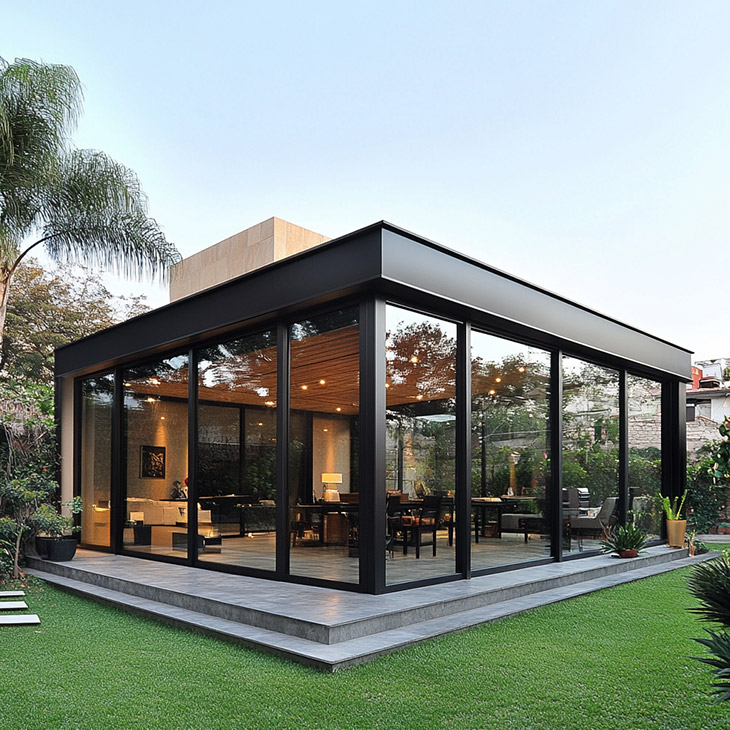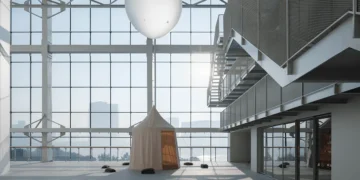
Incorporating luxury into the practicality of steel buildings is a growing trend in modern architecture. Many property owners are discovering that steel structures go beyond industrial aesthetics and can also embody sophistication and style. Luxury steel buildings offer the perfect blend of durability and high-end design, elevating your property to new standards.
Designing a high-end steel building involves careful planning and creativity. By integrating sleek finishes, innovative layouts, and premium materials, these structures can defy traditional perceptions and emerge as centerpiece masterpieces. Property owners can enjoy both resilience and elegance combined in one smart investment.
The customization options available in luxury steel buildings enable the creation of unique spaces tailored to individual tastes. Whether it’s a personal studio, a refined office, or a lavish entertainment area, these buildings provide endless potential. This versatility ensures that style does not compromise functionality, making steel buildings an appealing choice for discerning property owners seeking both beauty and strength.

Essentials of High-End Steel Building Design
Designing a luxury steel building requires balancing style, quality, and sustainability. Incorporating innovative architectural styles, using high-quality materials, and adopting sustainable practices are key elements.
Innovative Architectural Styles
High-end steel buildings can merge elegance with innovation through architectural marvels. Sleek lines and contemporary designs are popular, enabling customization that meets personal tastes and property aesthetics.
Customization: Steel allows for diverse shapes and sizes, appealing to both residential and commercial uses.
Aesthetics and Functionality: Vital for creating structures that are both beautiful and practical. Modern design blends these elements easily, enhancing curb appeal.
Many metal buildings in Mississippi follow these trends, resulting in structures that stand out yet integrate well with their surroundings.
Material Quality and Durability
Material quality is central to durable steel buildings. High-grade steel provides structural integrity, longevity, and resistance to various weather conditions, which is especially crucial in areas with changing climates.
Investment in Quality: Prioritizing premium materials can lead to lower maintenance costs and enhanced property value. Steel offers fire and pest resistance, which are essential features for long-term sustainability.
Corrosion Protection: Anti-corrosion coatings help maintain the building’s appearance and durability over time.
Sustainable Building Practices
Incorporating sustainable practices is vital for eco-friendly construction. Steel is recyclable and often comprises recycled materials, reducing environmental impact.
Energy Efficiency: Steel buildings are easily insulated, reducing energy needed for heating and cooling.
Solar Integration: Roof designs can accommodate solar panels, enhancing energy independence and sustainability.
Sustainable designs also reduce operational costs while fostering a commitment to responsible building practices. This is particularly relevant for regions such as Mississippi, where energy conservation is an ongoing focus.

Practical Considerations for Functionality
In addition to aesthetics, functionality is key to designing a high-end steel building.Attention to climate responsiveness, modern amenities, and security measures ensures a comfortable and secure environment that maintains a luxurious appeal.
Climate-Responsive Design
Understanding the site’s climate is crucial for ensuring the building functions efficiently year-round. Insulation plays a vital role in temperature regulation, reducing energy use for heating and cooling. In areas prone to heat, reflective roofing materials can minimize the heat load.
Ventilation systems also enhance climate responsiveness. They ensure fresh air circulation and prevent moisture buildup. In colder regions, heated flooring systems contribute to warmth and comfort. Additionally, incorporating large windows can harness natural light, reducing the need for artificial lighting and creating a brighter space.
Integration of Modern Amenities
Modern amenities are an integral component of a high-end building’s functionality. Smart home technology provides convenience through automation, controlling lighting, temperature, and security systems from a smartphone or tablet. This feature is particularly appealing to tech-savvy users seeking ease of use.
Incorporating energy-efficient appliances aligns with sustainability goals. Energy-efficient lighting and appliances not only reduce utility costs but also support environmental conservation efforts. A dedicated internet connectivity infrastructure ensures seamless integration of digital devices, enhancing the building’s functionality for both work and leisure.
Security Features
Security is a paramount concern for any high-end structure. Surveillance systems play a crucial role, offering peace of mind through continuous monitoring. High-resolution cameras, motion sensors, and alarm systems form a comprehensive security network.
Access control systems, including biometric scanners and smart card-based systems, provide an additional layer of security. These systems offer controlled entry to authorized individuals, enhancing privacy and preventing unauthorized access. Furthermore, reinforced doors and windows contribute to the building’s overall security envelope, ensuring robust protection.



















